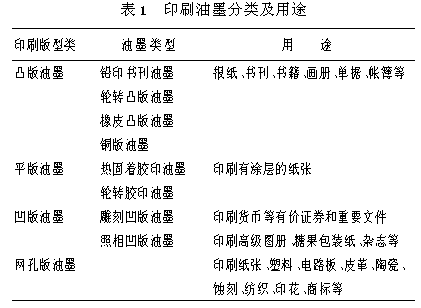As a means of disseminating information on politics, culture, arts, science and technology, printed matter is everywhere, and it is also widely used in packaging materials and building decoration materials. With the progress of society and the improvement of people’s living standards, the printing of newspapers and periodicals in newspapers has become more and more exquisite. The pattern of building decoration materials is changing with each passing day. The packaging of goods has become the focus of many manufacturers to attract customers to enhance their competitiveness. Printing inks are one of the main raw materials for printing products. The promising prospects of the printing industry are promising and provide a broader market for ink applications.
Since the 1980s, environmental issues have gradually become the focus of increasing attention. The printing industry consumes a large amount of mineral oil and organic solvents every year. The mineral oils commonly used in the ink industry mainly include gasoline, high boiling point kerosene and lubricating oil. The organic solvents mainly include aromatic hydrocarbon solvents, alcohol solvents, ketone solvents, and ester solvents. All these solvents have different degrees of toxicity, especially aromatic solvents, which have attracted more and more attention because of their carcinogenicity. According to OSHA regulations (Occupational Safety & Health Administration, 1985) requiring the use of aromatic-free (AF) solvents, the development of AF solvents (Aroma Free Solvent) has become a hot spot in the ink industry.
In the ink composition, mineral oil accounts for a large proportion, among which news ink mineral oil content is as high as 76%. The amount of these inks is staggering. In Japan alone, the ink production of India reached 40,000 tons in 1993. In 1996, it increased by nearly one-fold. The market share of Indian ink only accounts for a small part, and Japan's ink consumption is also insignificant compared with the world. In 1998, the global ink market totaled 12 billion U.S. dollars, of which US 4.3 billion, Asia 3.3 billion, Europe 2.7 billion, Latin America 800 million, and Canada 400 million. These mineral oil-based inks emit large amounts of volatile organic compounds into the atmosphere each year, causing serious environmental pollution.
The disposal of waste ink after printing was once buried or burned. The secondary pollution caused by the waste ink burning is not desirable, and because the polymer resin and the mineral oil are difficult to biodegrade, the ink buried in the ground is not really “treated†and it will further pollute the environment. The content of aromatic hydrocarbons in mineral oil can not be ignored, in addition, it also contains benzene, toluene, xylene, phenols and other substances, but also have varying degrees of toxicity. Every year ink also flows into the environment printing ink in the form of waste newspapers and periodicals. It has been listed as one of the pollution sources harmful to the environment.
More than 5,000 materials are required to formulate printing inks, of which 80% to 85% are obtained from petroleum compounds and intermediates. While oil is a non-renewable resource, the energy crisis has become a global issue in the 21st century. The development of substitutes for mineral oils has already begun in China, and China has become an oil importer since 1993. It is estimated that by 2010, China’s oil shortage will reach 1.4 billion tons. A considerable part of these petroleum raw materials is used in the ink industry. It has become imperative to develop a safe, non-polluting, biodegradable mineral oil based ink substitute.
1 ink introduction
1.1 The concept of ink
Ink is a stable colloidal dispersion system. It is mainly composed of a binder and a colorant. According to the printing performance requirements, an appropriate amount of an auxiliary agent is added, and after mixing and stirring according to a certain ratio, the dispersion device is repeatedly rolled and uniformly dispersed.
1.1.1 Ink Composition
Binder: It is the fluid part of the ink that mainly determines the type of ink. It is required to have the necessary gloss, drying properties and print transfer properties.
Coloring material: A solid powder material with a certain color, which is insoluble in water or in oil or binder, determines the ink quality (color, thin viscosity, physical and chemical properties, printability, etc.) to a large extent. Requires bright colors, high concentration and good dispersibility.
Filler: There are natural and artificial types. To reduce costs.
Adjuvants: include friction agents, anti-drying agents, anti-gelling agents, viscosity reducing agents, and driers.
1.1.2 Basic Characteristics of Ink
The ink should have vivid colors, good printing performance, satisfactory drying speed, and resistance to solvents, acids, alkalis, water, light, heat, and the like.
1.1.3 The classification and use of inks are shown in Table 1.

1.2 Vegetable oil based ink
Vegetable oil-based ink refers to an environment-friendly ink that uses vegetable oil instead of part of the petroleum series solvent in ordinary inks and other components such as resins and pigments.
(to be continued)
Packaging Tube,Portable Packaging Tube,Portable Test Tube,Pre Roll Tubes
NANTONG OUFEIYA IMP& EXP CO.,LTD , https://www.nantongoufeiya.com